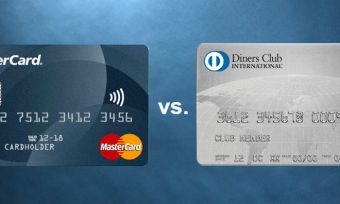Low interest rate credit cards
The table below displays some of the highest-rated low interest rate credit cards from our online partners.

Instantly compare 140+ credit cards based on the inputs below
Showing 10 of 132 results
Unsure of a term in the above table? View glossary
The initial results in the table above are sorted by Star Rating (High-Low) , then Purchase rate (Low-High) , then Provider Name (Alphabetical) . Additional filters may have been applied, see top of table for details.
SPONSORED
-
Receive 60,000 bonus Qantas Points
-
Spend $3K within 3 months of approval date
-
New Card Members only. T&Cs apply.
What is a low interest rate credit card?
A low rate credit card is a type of credit card that has a low interest rate on purchases. This could help you save money if you don’t pay off your credit card balance in full each month.
Low interest rate credit cards are generally ‘no frills’ and may not include rewards programs, perks and bonuses that premium cards may offer.
Pros and cons of low rate credit cards
Here are some of the potential pros and cons of low rate credit cards:
Potential advantages of using a low rate credit card:
- You will pay less interest compared to a higher rate card.
- Some low rate cards may also come with low fees, which could help you save on ongoing costs.
Potential disadvantages of using a low rate credit card:
- Low rate cards generally do not offer rewards programs.
- Low rate cards typically also do not offer other features and perks, such as complimentary travel insurance.
How to compare low rate credit cards?
When searching for a low rate credit card, there are a a few factors that could be worth keeping in mind, including:
- Purchase rate: Look for a low purchase rate. If your card has a 0% purchase rate or low purchase rate for an introductory period, check what the revert rate is.
- Interest-free days: This is the maximum number of days that you won’t pay interest on new purchases, provided you pay off your closing balance in full each month. So you may want to look for a card with a long interest-free period to give you more time to repay your purchases.
- Fees: Check the fees, including annual fees, late payment fees, balance transfer fees, cash advance fees and international transaction fees.
- Features: Check whether the card offers any features such as rewards programs or complimentary insurances.
Frequently Asked Questions about Low Rate Credit Cards
Latest in credit cards
Canstar Credit Card Star Ratings and Awards
Looking for an award-winning credit card product or to switch providers or brands? Canstar rates products based on price and features in our Credit Card Star Ratings and Awards. Our expert Research team shares insights about which products offer 5-Star value and which providers offer outstanding value overall.
Canstar rates a range of financial products, covering banking, insurance and investment. We also reveal which providers have the most satisfied customers in our dedicated Customer Satisfaction Awards.
Explore more credit cards:
Credit Card Options
Interest-free period Credit Card
Sign-up offers Credit Cards
Compare Diners Club Cards
Best rewards credit cards Australia
Best Qantas Frequent Flyer Credit Card
Mastercard credit cards
Newcastle Permanent Credit Cards
NAB Credit Cards
ING Credit Cards
Australian Mutual Bank Credit Cards
HSBC Credit Cards
About our finance experts
Alasdair Duncan, Senior Finance Journalist

Joshua Sale, Group Manager, Research & Ratings

As Canstar’s Ratings Manager, Josh Sale is responsible for the methodology and delivery of Canstar’s Credit Card Star Ratings and Awards. With tertiary qualifications in economics and finance, Josh has worked behind the scenes for the last five years to develop Star Ratings and Awards that help connect consumers with the right credit card for them.
Josh is passionate about helping consumers get hands-on with their finances. Josh has been interviewed by media outlets such as the Australian Financial Review, news.com.au and Money Magazine.
You can follow Josh on LinkedIn, and Canstar on Twitter and Facebook.
Thanks for visiting Canstar, Australia’s biggest financial comparison site*
Important information
For those that love the detail
This advice is general and has not taken into account your objectives, financial situation or needs. Consider whether this advice is right for you.


























